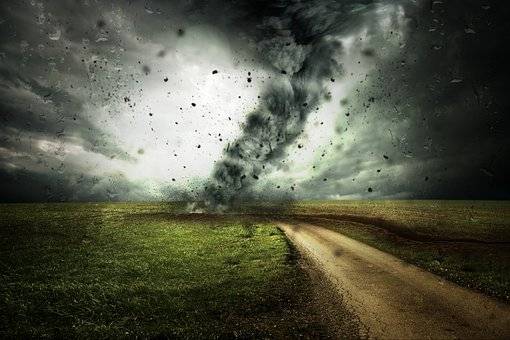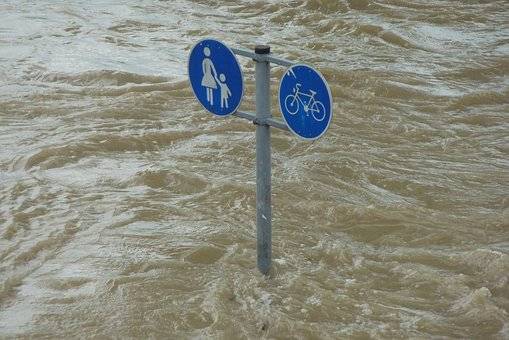In the later part of the 19th century, Sir Gilbert Walker was the first to coin the term “climate teleconnection.” And since then, the world has met multiple “climate teleconnections and climate change incidents.”
The teleconnection concept of climate is quite weird and interesting simultaneously. You will see links in climate change between places far from each other and in no way geographically connected. The major triggers of such changes are how air moves around at atmospheric levels. These changes can last from a few weeks to multiple months.
And as per researchers, it is just the energy shifting from one pace to the other. For if there is an alteration in the temperature over the Pacific or the Atlantic, the energy will be shifting to some another place, causing a pattern of change.
3 elements of climate – climate teleconnections and climate change
There are three climatic zones on Earth – Tropical, Polar, and Temperate. The one closest to the Equator experiences a tropical climate. Here, the days are quite hot, with the coldest month having a temperature of 18 degrees Celsius.

Next, we have the polar zone or the two poles, the North and the South, with the coldest days and nights on Earth. The months here are warm enough, with less than 10 degrees celsius as the average temperature.
Also, we have the temperate zone, which comes in between the Tropical and the Polar regions. Here the temperature is consistent throughout the year, which is neither too hot nor too cold.
Components of climate and the climate system
To understand the phenomenon of climate teleconnections and climate change, let’s learn about the concept of the climate system.
It is quite a complex system comprising five exclusive components – the atmosphere, cryosphere, hydrosphere, lithosphere, and biosphere. This particular system does take its own time to evolve, but there is an influence of internal shifts and external forces. And the list goes as solar variations, anthropogenic forcing’s, and volcanic eruptions.
Climate teleconnections and climate change – The La Niña & El Niño effect on Climate System
| The effects of La Niña & El Niño are also termed as the unplanned cooling and warming effect throughout the Tropical Pacific. And does happen every couple of years, causing remote teleconnections. The most interesting part is this effect does reach the stratospheric level, 10km above the Earth’s surface. | |
| La Niña | El Niño |
| The effects of La Niña are quite the opposite of the El Niño effect. | It warms up the Stratosphere across both hemispheres. Whereas the part of the Stratosphere in the lower tropical region does get cooler. |
| It does offer effects that are non-stationary and variable as well. | Also, the same lead to frequent breakdowns of the polar vortex (stratospheric). Where there is a band of strong eastward wind within the polar stratosphere. |
Difference between climate models and weather models
With so much going on and change being the only constant in climatic affairs, meteorologists look after the same. And that gives rise to the concepts of weather and climate models with basic differences.
The weather model in climate teleconnections and climate change
In a weather model, the meteorologist does make predictions based on the ongoing oceanic and atmospheric conditions. Here, humidity, air pressure, temperature, and wind speed & direction are made the main concern. Also, a place’s geographic location, urban structures, water level proximity, elevation, and latitude can be major influencers in the same. Weather models are only appropriate for a short time span and can also be enough to make suggestions about neighboring towns and cities
The climate model in climate teleconnections and climate change
Climate models are a comprehensive overview of weather models. They have a border prospect and offer an overall picture of climate teleconnection geography spread across broader areas with no physical connections. Also, the reports combine data from several years and provide adequate suggestions about how weather conditions will change in the upcoming decades.

Various aspects are included in the climate models, from circulations in the ocean areas to melting glaciers. Also, the one calculating the same does use mathematical equations and multiple data points to understand the shift in energy and links in between. There are three climate model types: models of intermediate complexity, energy balance, and general circulation.
Climate teleconnection patterns and climate change
So, did you like the explanations? Moving forward, let’s look into the two new astonishing studies which indicate sync between stoking wildfires and multi-continental droughts around the globe.
Climatic teleconnections control global burned area
As per recent studies, there has been quite a notable decrease in the globally burned areas. That is because most unused regions are utilized for agriculture and project building. But still, there have been cases of extreme wildfires where places did get burned and destroyed for no good.
With this study, the researchers did aim to unravel the possible links between globally burned areas and climatic teleconnections across different biomes and continents. But only for places not analyzed so far at an international level (e.g., Antarctic and Arctic modes).
The study did offer adequate information to the land managers and those who indulge in emergency services on an international level. Additionally, it brought the world to the conclusion that climatic telecommunications have the upper hand in the percentage of globally burned areas. However, technicalities of fire suppression, land management, and other region-wise practices also have a great effect.
International droughts and the links between various drought hubs
Recently, the world came across various news on spatially compounding droughts. And as a reason, there has been an impact on the availability of water, food, energy, and security across international borders. This can also, in the future, lead to complications with trade policies, food scarcity, political instability, and unwanted human immigration.
The study did aim to understand the sync between climatic teleconnections and droughts across regions that are not connected by geography. With the data and results, researchers can find adequate solutions to quantify and shorten risks related to constant bread-basket failures.
At the end of the research, it is concluded that:
- Droughts have high levels of linkage with certain international locations, and those are termed “drought hubs.”
- The name of the major drought hubs goes as – US (northwestern & midwestern), Andes (eastern slope), the southern part of Europe, Amazon, regions of Scandinavia, and the eastern slope of the Andes.
- Also, results do conclude that the El Niño effect triggers multi-continental level droughts across Africa, America (South), and Australia.
The results are expected to enhance societal levels of drought mitigation measures.



